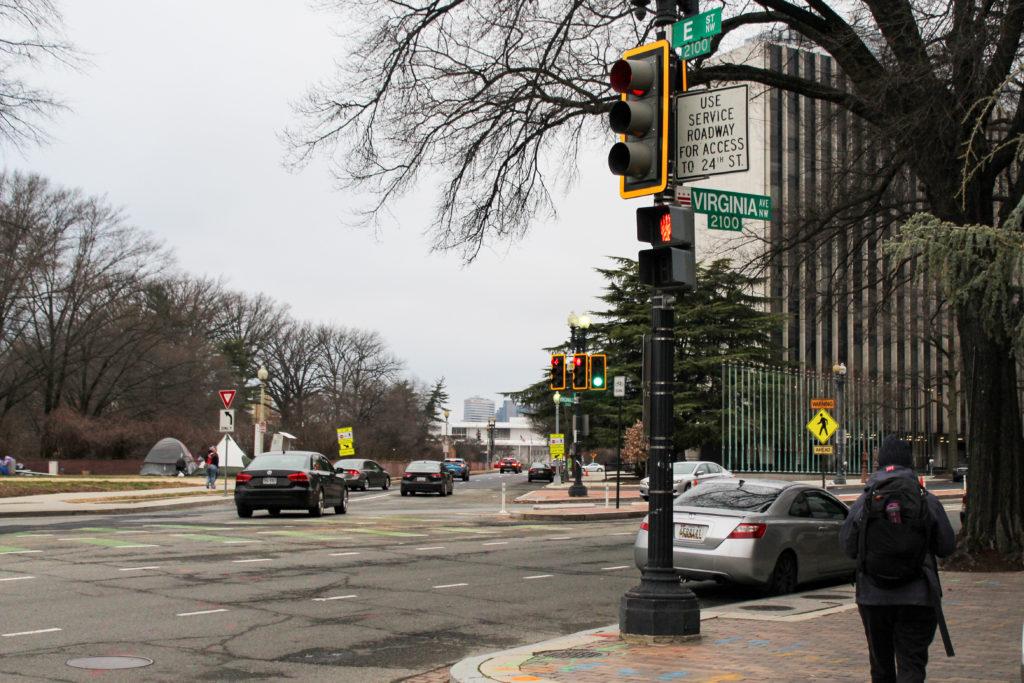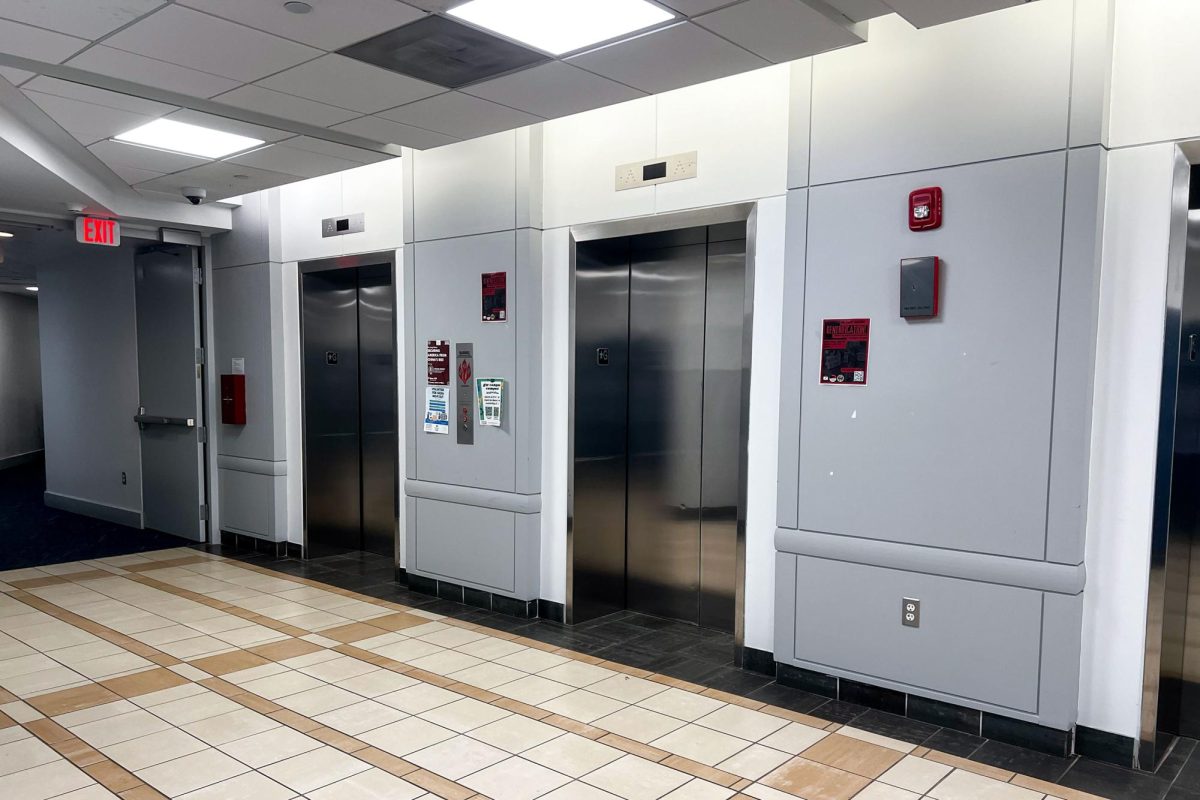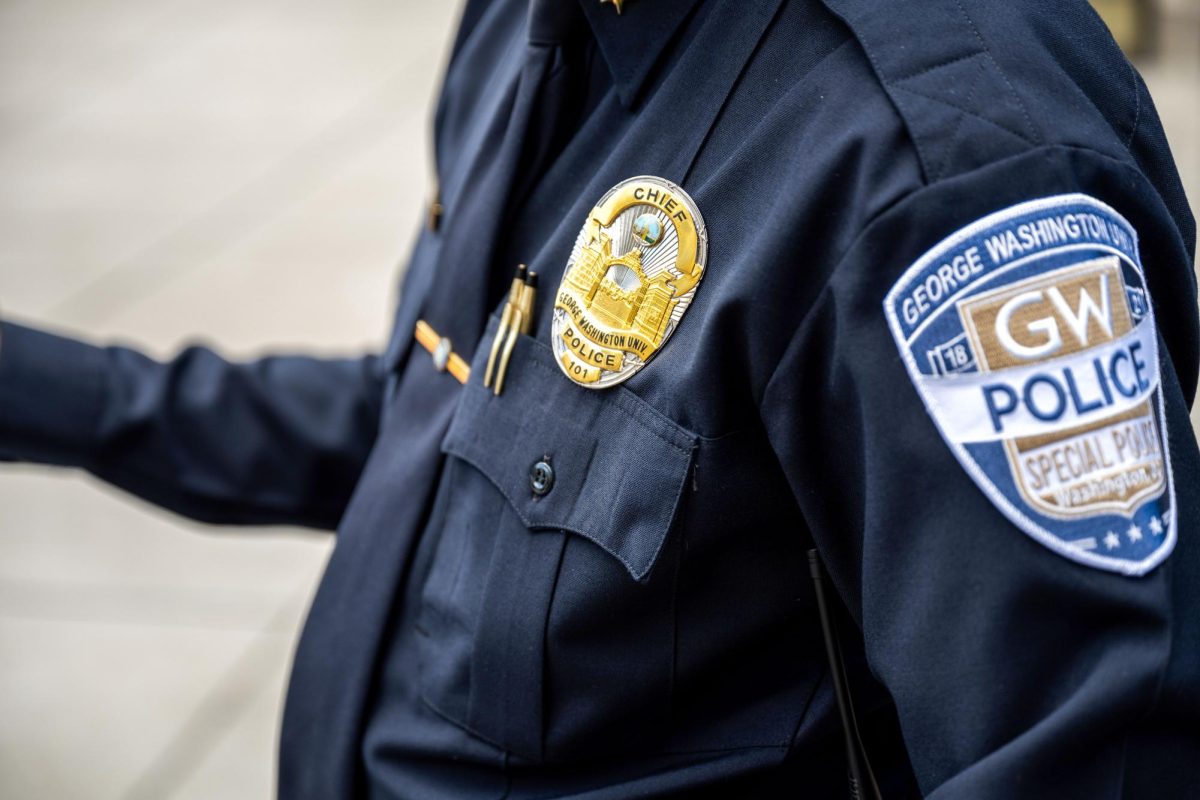Traffic fatalities in the District dipped last year, but local leaders said the decline does not reflect any major breakthroughs in Mayor Muriel Bowser’s since-prolonged plan to eliminate traffic fatalities by 2024.
The Metropolitan Police Department reported 35 traffic-related deaths in 2022 – a slight decrease from the 14-year high of 40 fatalities the year prior. But with five deaths so far this year compared to two reports of fatalities in the same period in 2022, local leaders said D.C.’s Vision Zero Initiative failed to achieve its “ambitious” goal of eliminating traffic deaths by 2024 in part because of inadequate traffic law enforcement and poor implementation of street design.
District Department of Transportation officials drafted D.C.’s Vision Zero Initiative in 2015, charting plans to eliminate city traffic deaths by 2024 by piloting protected intersections, installing 20 miles of bike lanes, publishing crash data through the Vision Zero database and expanding street safety legislation. Bowser updated the plan in October 2022, implementing protected intersections, bike lanes, median refuge islands, curb extensions and traffic signal adjustments to prevent crashes and protect alternative modes of transportation.
She said officials are preparing a “comprehensive refresh” of the plan in 2024.
“Our original target of achieving zero deaths by 2024 was ambitious and has not been without its challenges,” Bowser said in a Vision Zero report in October.
Stephanie Tulowetzke, the manager of the Washington Area Bicyclist Association’s Vision Zero Coalition, said the D.C. Council made “great progress” in reducing fatalities last year by passing Vision Zero-related bills like the Safer Streets Amendment Act of 2022 in December, which banned right turns on red lights. She said despite the drop, officials should focus on implementing more permanent “traffic calming” street designs like protected bike lanes that reduce vehicular space on the road and force cars to slow down.
“Any deaths indicate that the work isn’t happening as quickly as it needs to,” Tulowetzke said. “The acceptable number of traffic fatalities in the District is zero. So, that’s the goal. That is what we’re working towards. It’s going to require an all-hands-on-deck approach.”
DDOT officials did not return multiple requests for comment.
Carlos Enrique Christian, a 24-year-old GW graduate student, died in January after a car ran a red light and struck the vehicle he was riding in, according to the Washington Post. The Post reported Christian was a passenger of an Uber involved in the crash at 15th Street and Massachusetts Avenue. The driver of the car that struck the Uber was later charged with driving under the influence and reckless driving, according to The Post.
In August 2022, a truck fatally struck cyclist Shawn O’Donnell at the intersection of 21st and I streets on GW’s campus. The accident occurred just days before the activation of a traffic light at the intersection, which residents and local officials demanded for years and said could have prevented O’Donnell’s death.
Two weeks after the accident, a driver hit a pedestrian walking along the 2100 block of Virginia Avenue, Foggy Bottom’s second traffic fatality of the year.
Jeffery Carroll, the assistant chief of MPD, said in their attempts to reduce fatalities last year, officers used enforcement mechanisms to slow down vehicular traffic, narrowing roadways and installing speed bumps and bike lanes to decrease last year’s fatalities. He said while some of the main causes of traffic deaths are intoxicated or distracted drivers, high speed is a common thread among accidents that turn fatal, which increased during the pandemic.
The Department of Transportation reported traffic fatalities spiked by 18.4 percent between the first half of 2020 and 2021. The chances a Virginia driver went at least 10 miles per hour over the speed limit rose by more than 50 percent from March to June 2020, compared to the same period a year earlier, according to the Insurance Institute for Highway Safety.
In D.C., law enforcement issued about half as many moving violations and half a million fewer parking tickets in 2020 compared to the year prior, according to WAMU 88.5. The D.C. Department of Motor Vehicles reported the city issued about 8,000 fewer moving violations in November 2022 compared to roughly the same period the year prior.
“Issuing tickets is not going to get us out of the situation,” Carroll said. “It does work. It is a tool in the toolbox, but it’s not the only tool. So we have to use a variety of strategies to really work to address that.”
Despite the increase in traffic deaths in 2023 compared to this time last year, Carroll said “it’s too early” to identify the causes behind the jump.
Foggy Bottom and West End Advisory Neighborhood Commissioner Ed Comer said while the ANC works closely with DDOT and the National Park Service to resolve traffic safety concerns in the neighborhood, taking steps like shortening crosswalk times at the corner of Rock Creek Parkway and Virginia Avenue and placing bike lanes by the Kennedy Center. He said MPD must also increase short-term traffic law enforcement to address safety issues.
“I see many instances of people going through red lights, making illegal turns and those are problems,” Comer said. “If you don’t enforce them, they’re going to continue or could get worse.”
The ANC called on the D.C. Council to pass the Walk Without Worry Act during a monthly meeting last February, which would approve the construction of raised crosswalks and intersections in high-traversed areas to protect pedestrians. Commissioner Yannik Omictin said the proposed improvements were needed at more than 50 Foggy Bottom and West End intersections in February 2022.
Vision Zero’s update last year identified a “High Injury Network,” which addresses the risk posed by roadways with the most deaths and injuries. The update includes street design proposals for these intersections that implement self-enforcing traffic measures to reduce speeds like converting a four-lane undivided street to a three-lane roadway with a middle lane for turns.
Todd Litman, the founder of transportation policy research organization Victoria Transport Policy Institute, said DDOT’s focus on street design to lower speeds and reduce overall car travel is the most effective means to reduce traffic fatalities and crashes. He said multimodal transport planning and pricing via distance-based vehicle insurance, parking pricing, road tolls and higher fuel taxes are the best ways to reduce traffic deaths because they encourage individuals to find alternatives to driving.
“Anything that shifts that balance that means people will spend more of their travel time either driving at slower speeds or traveling by a nonautomobile mode definitely increases safety,” Litman said.







